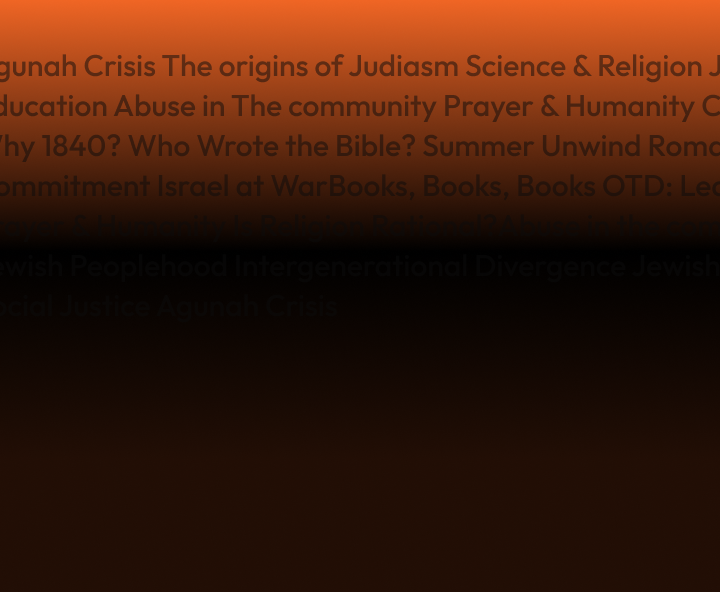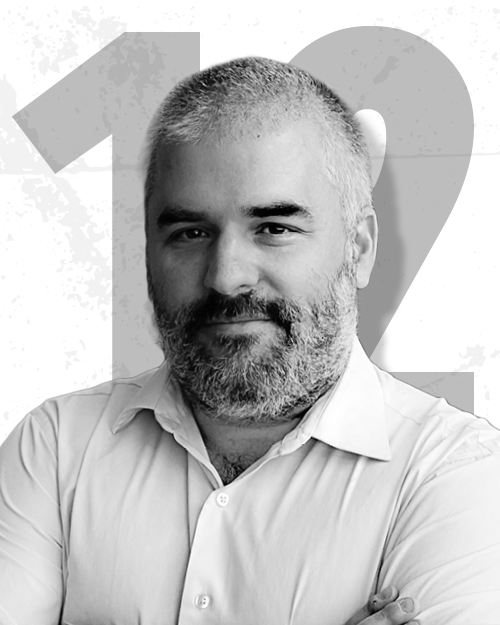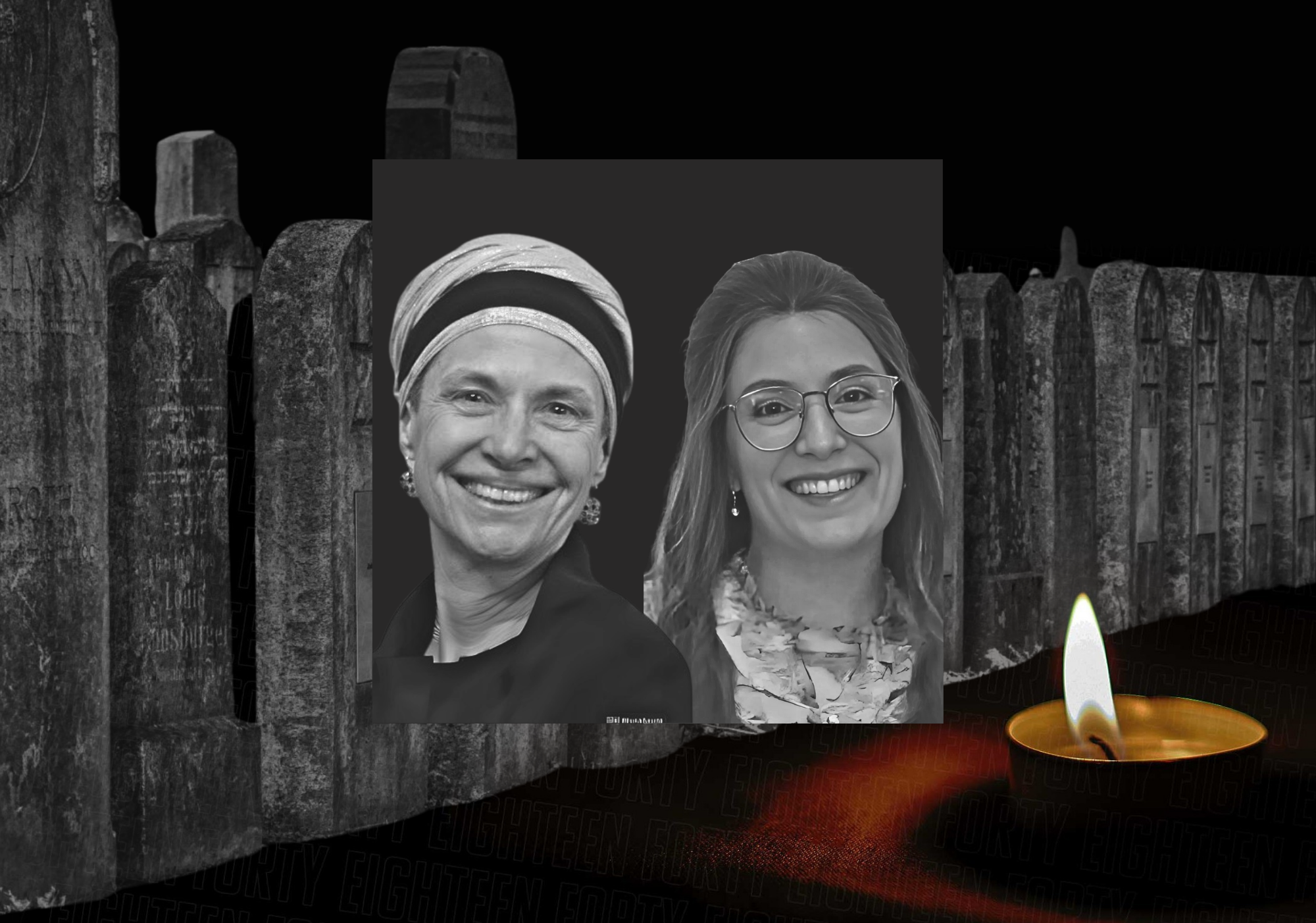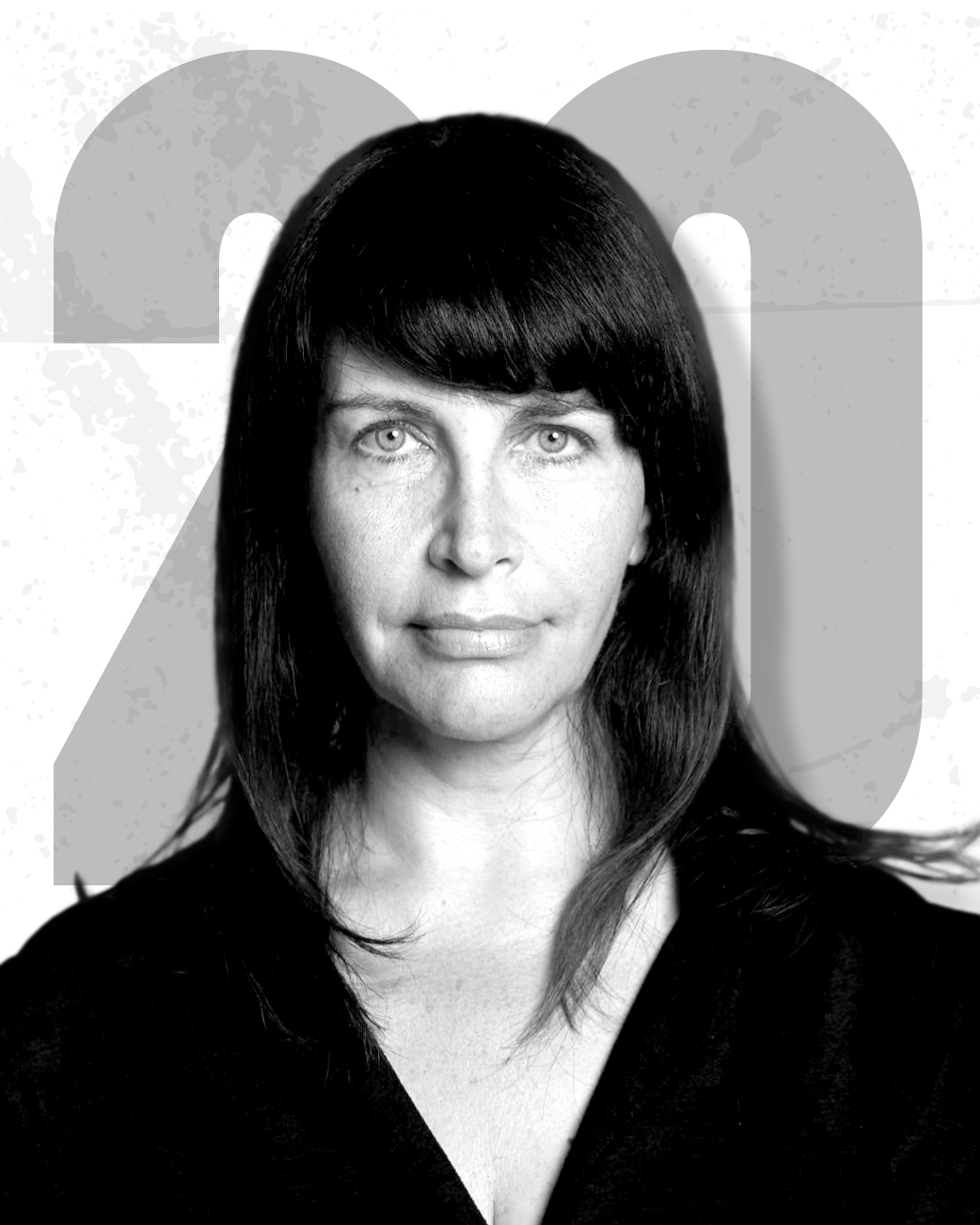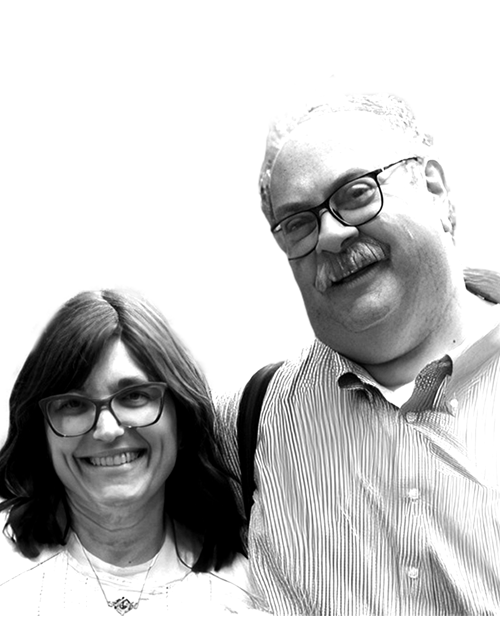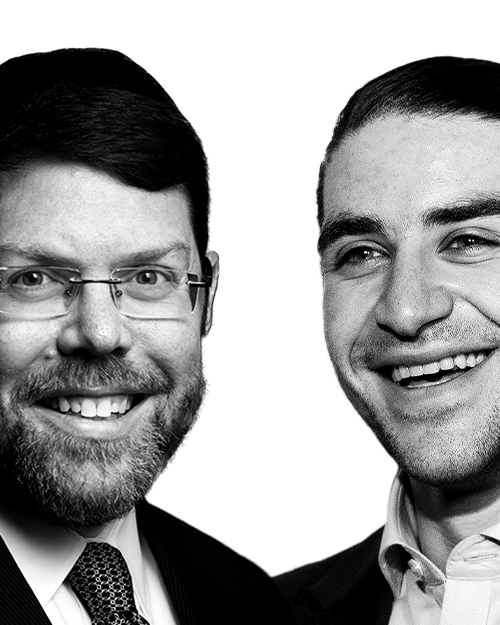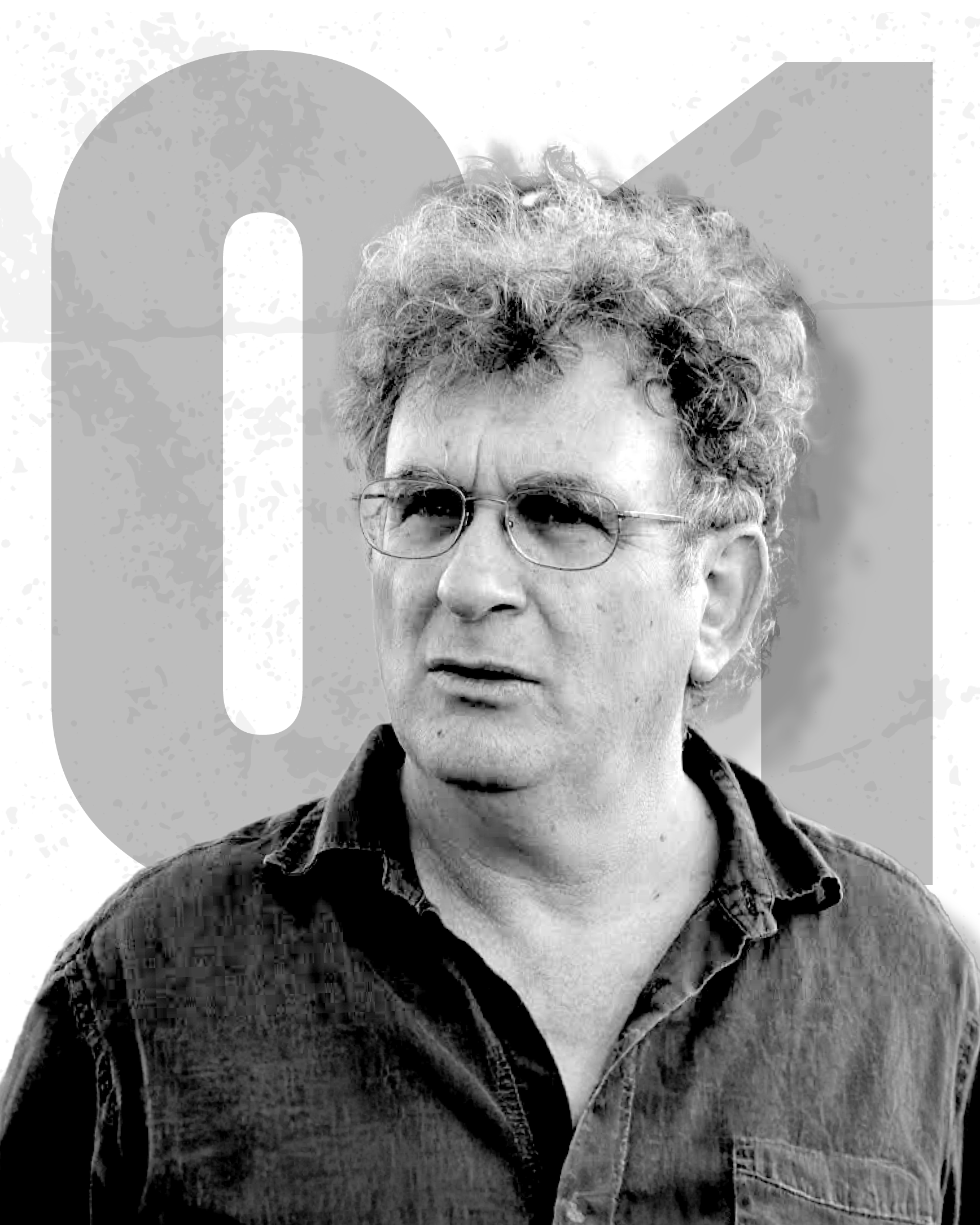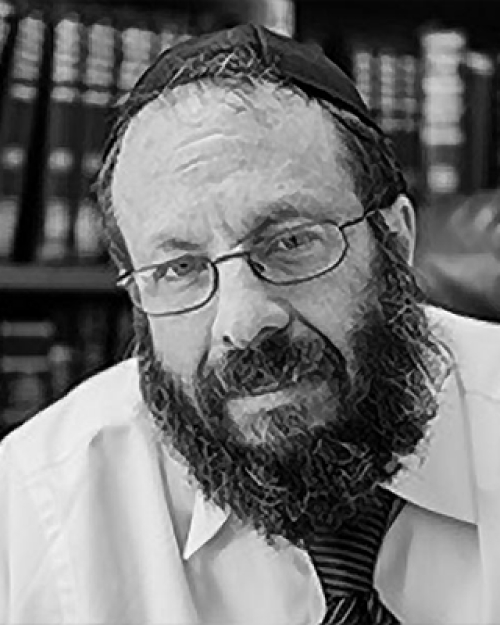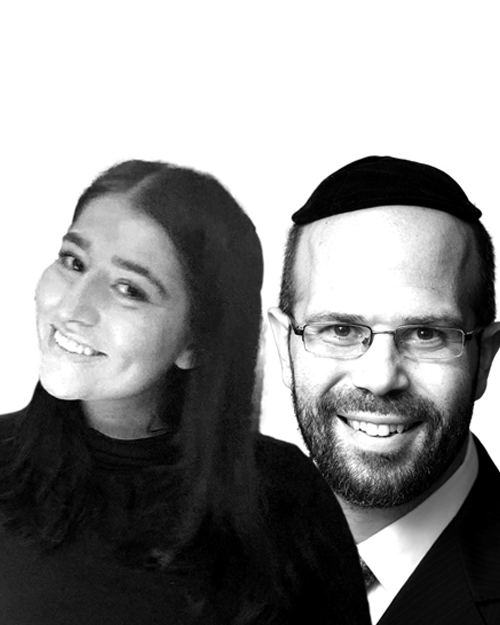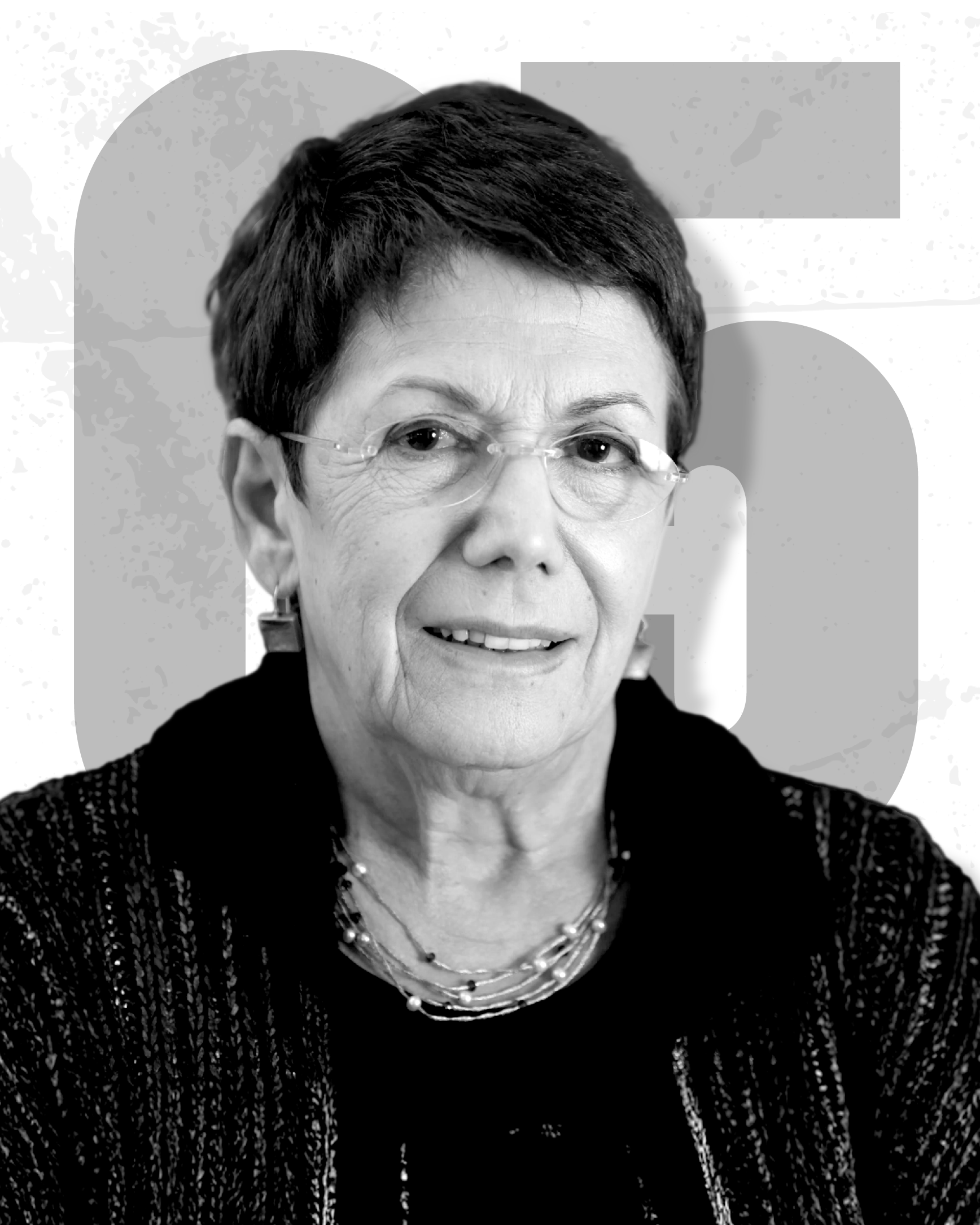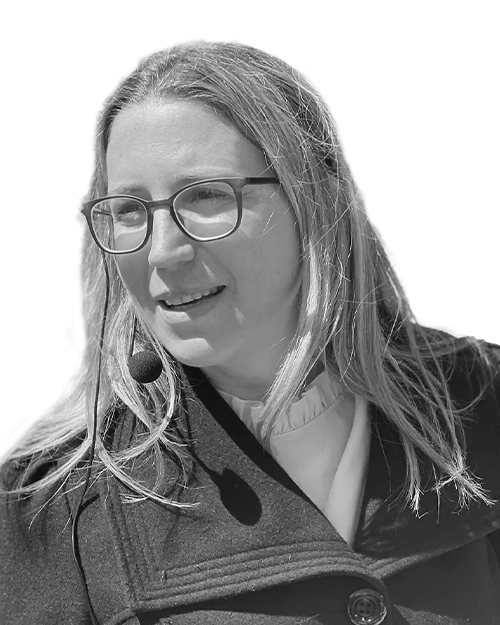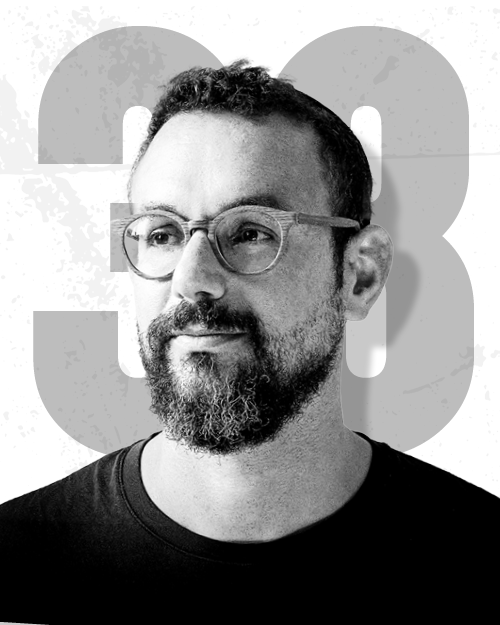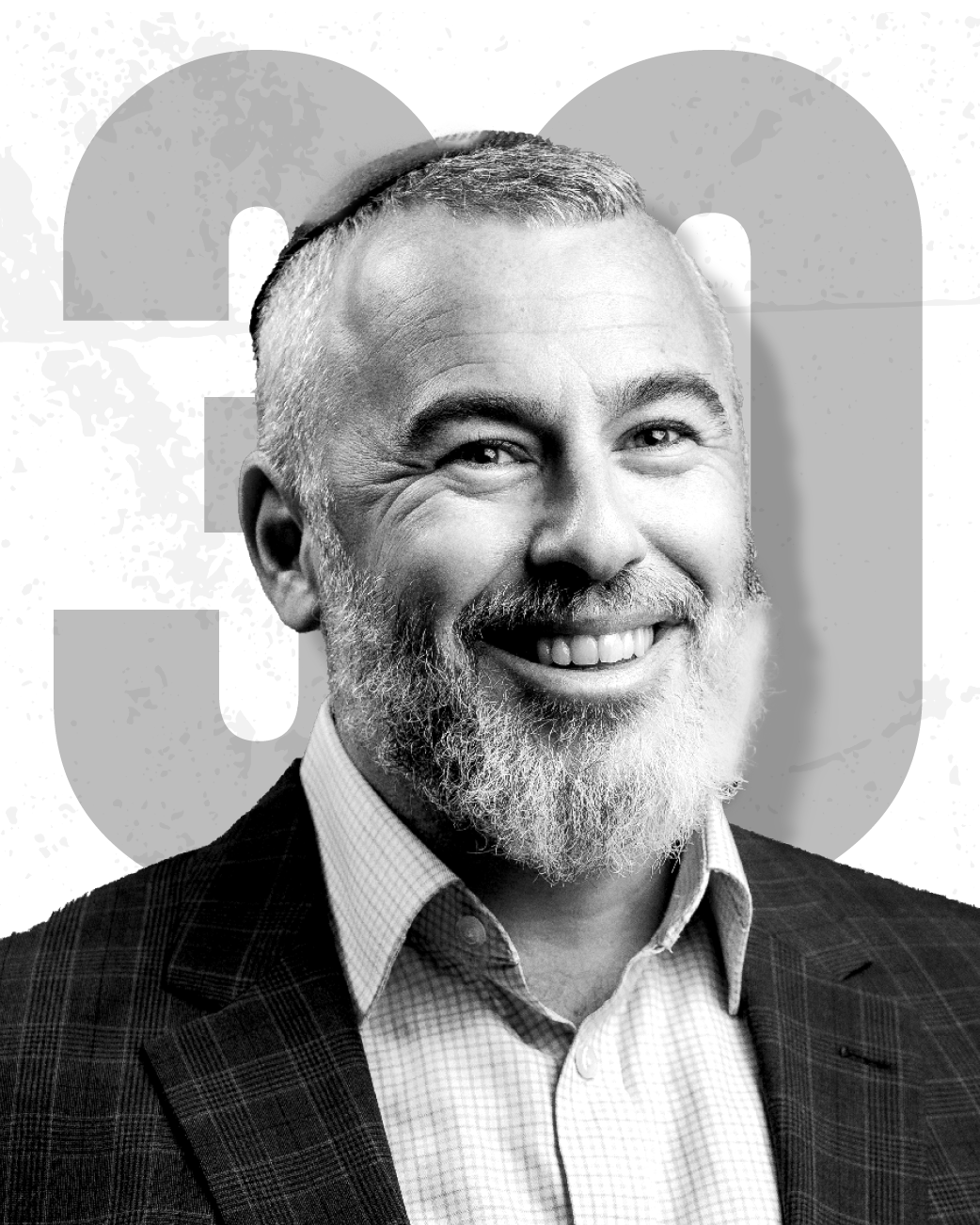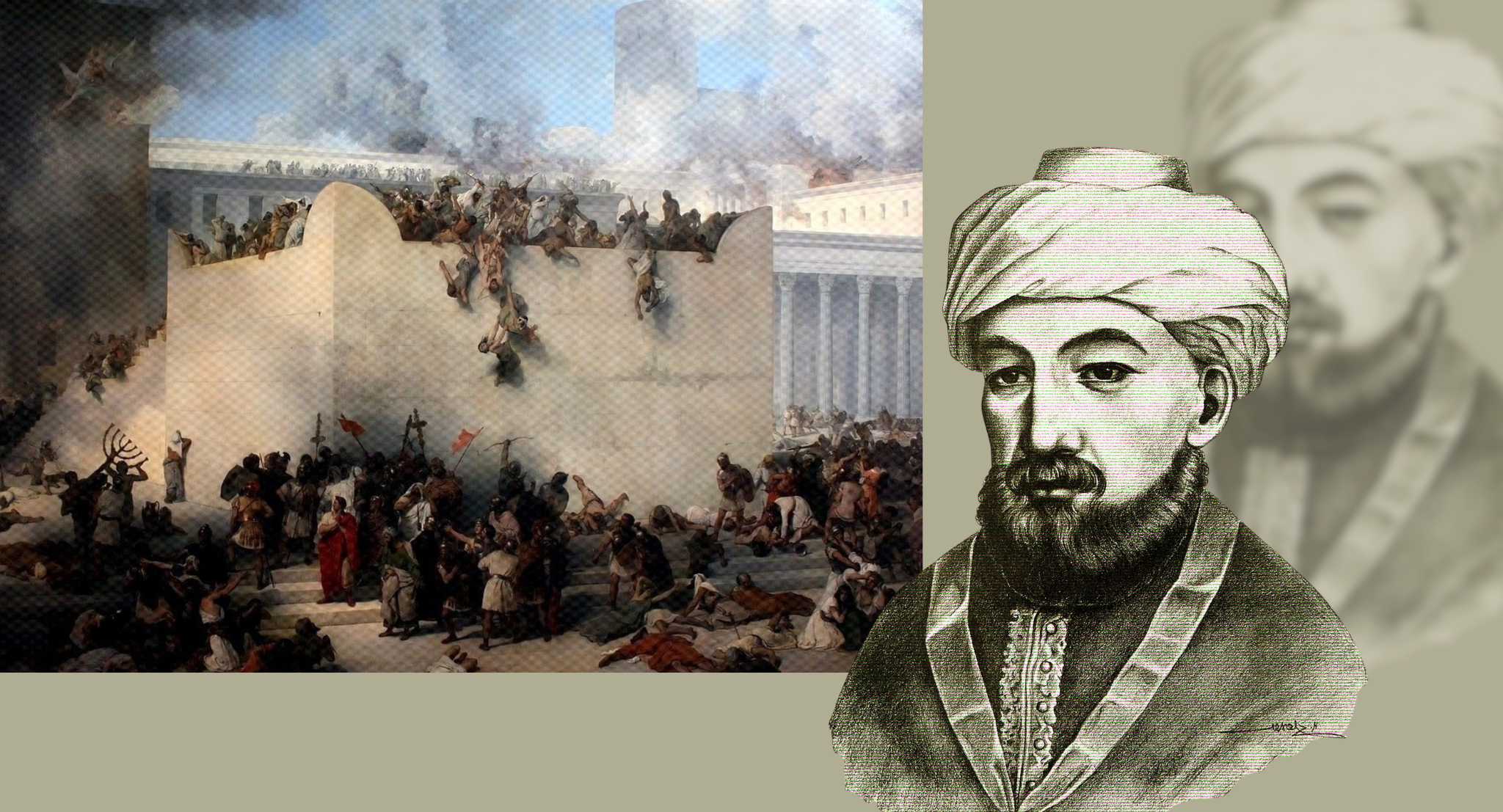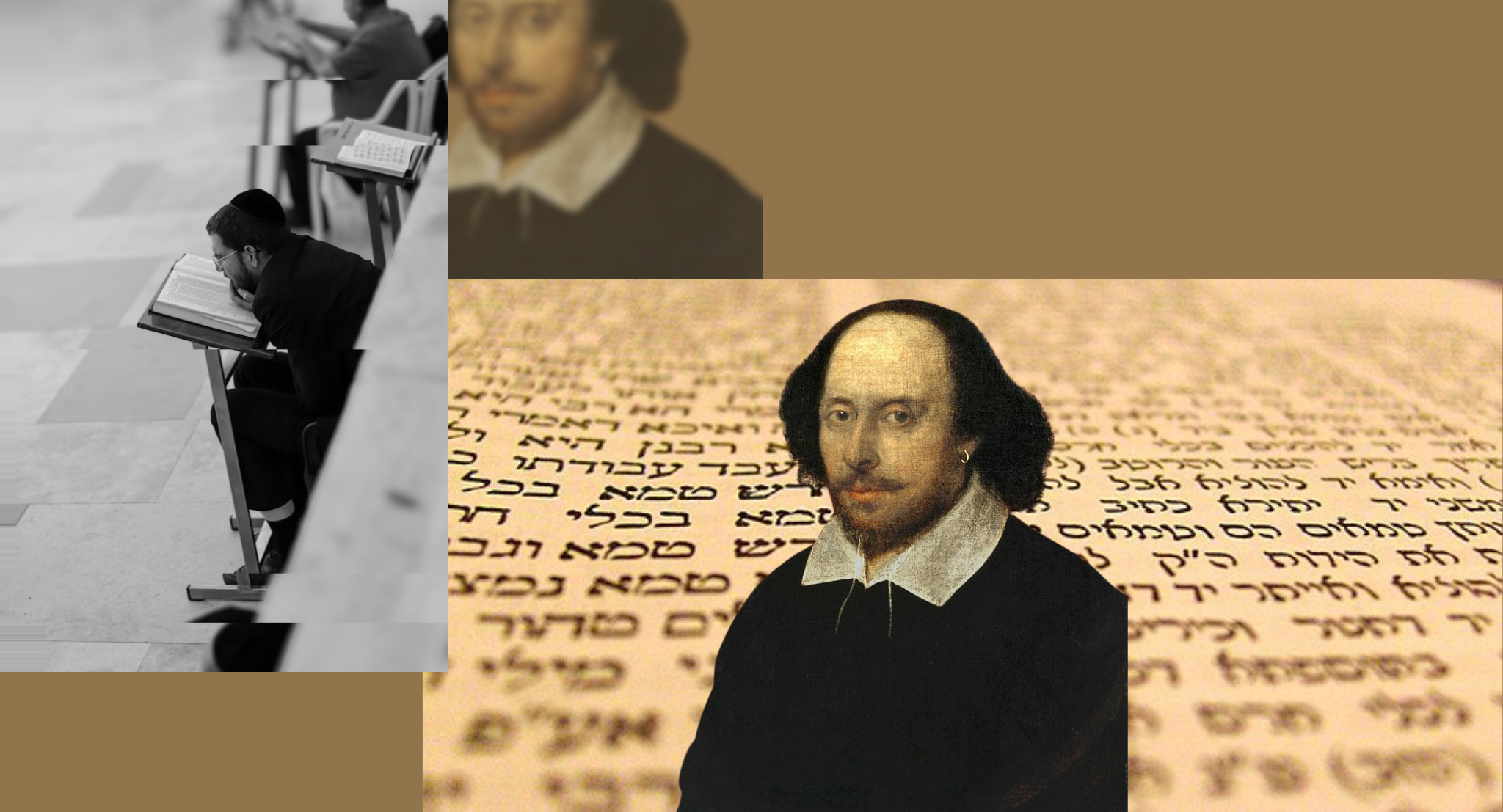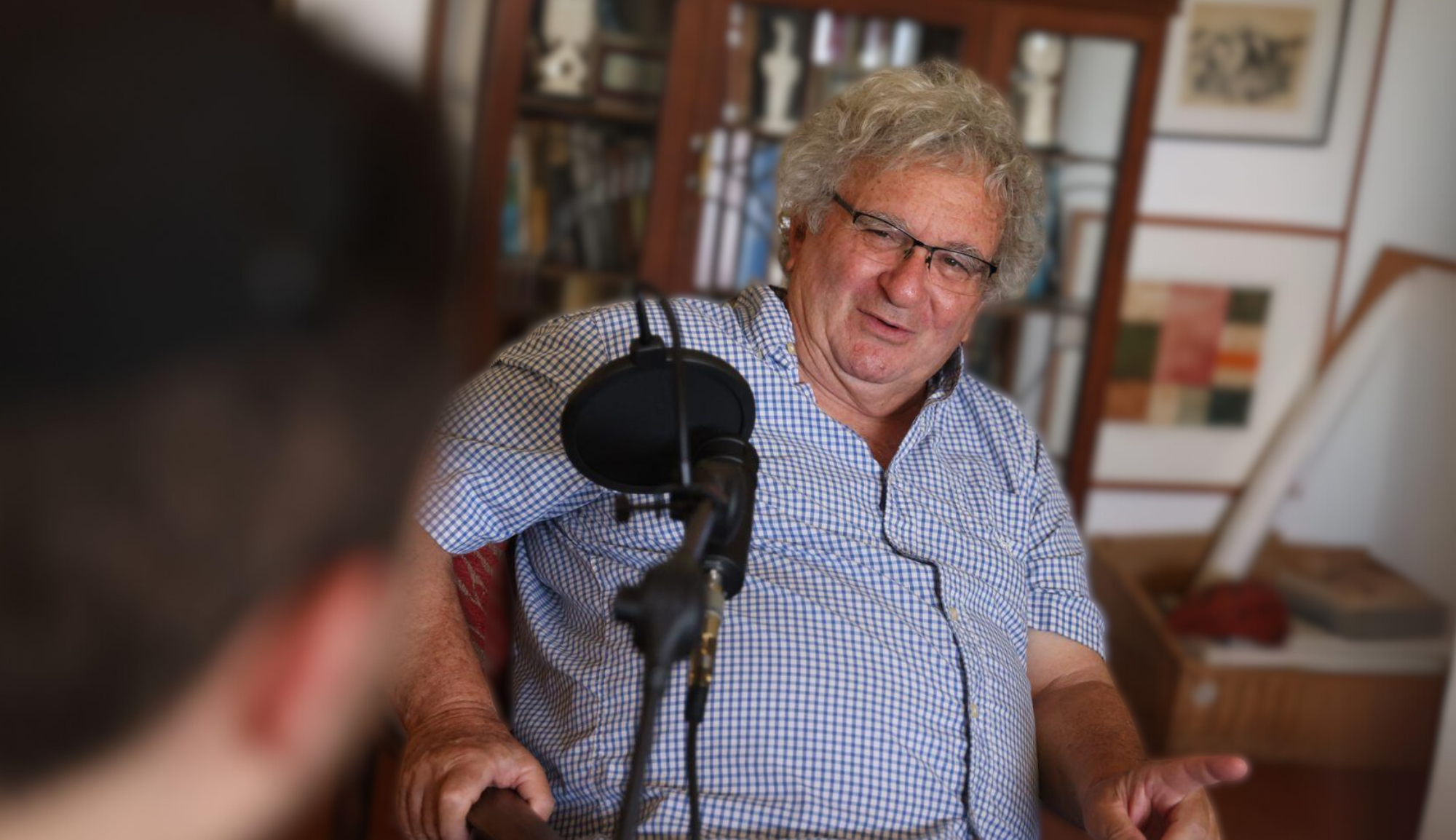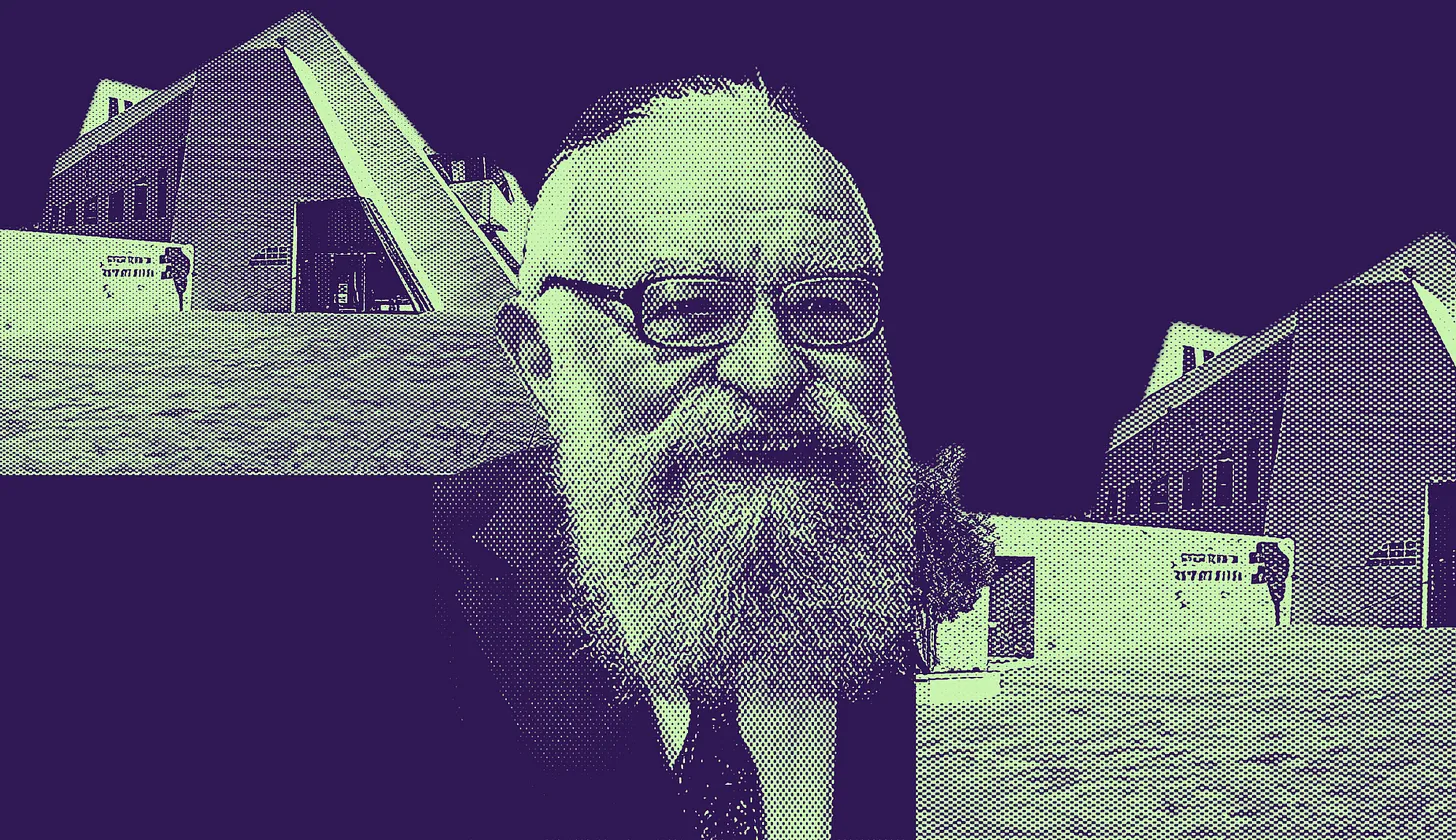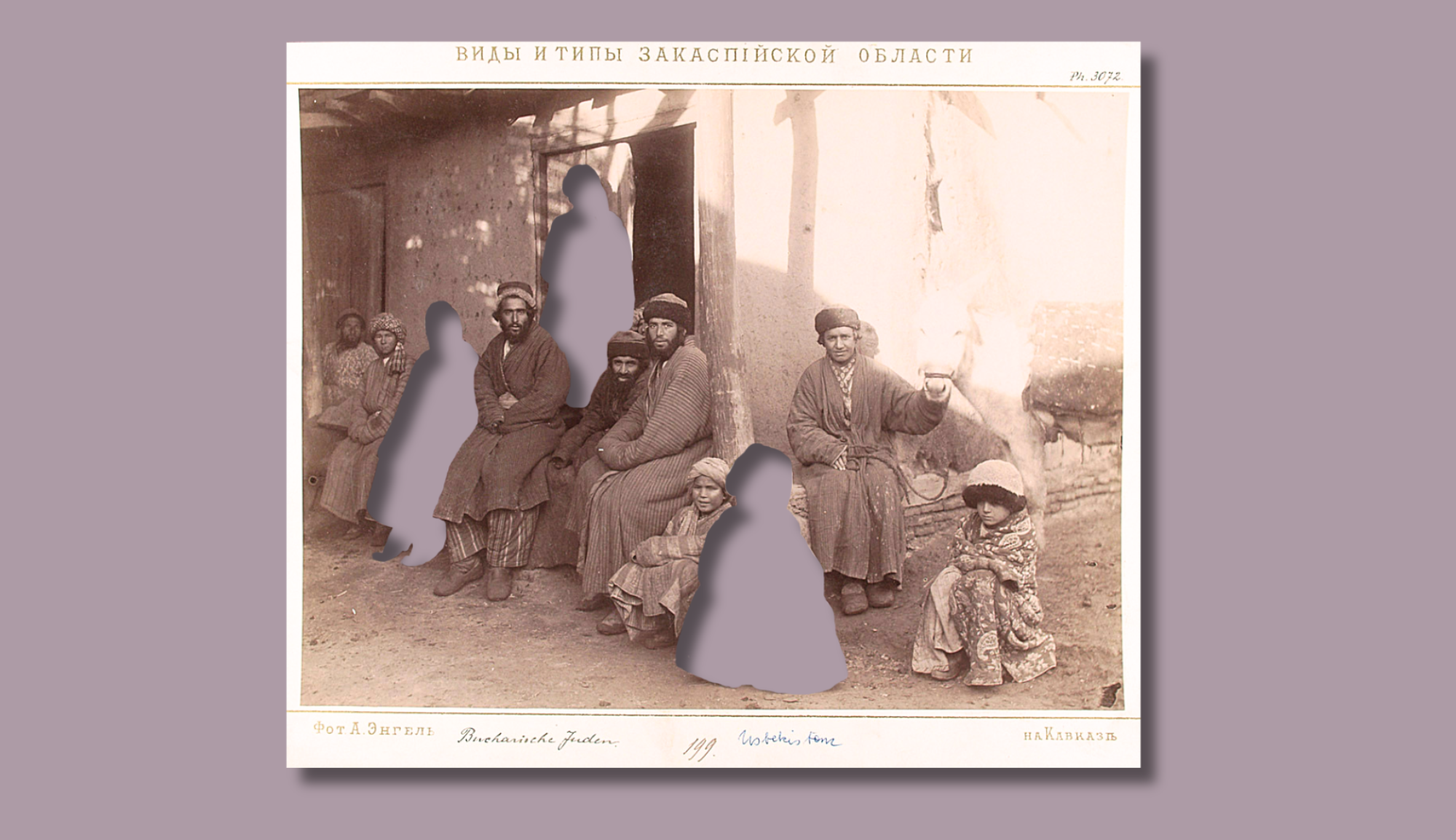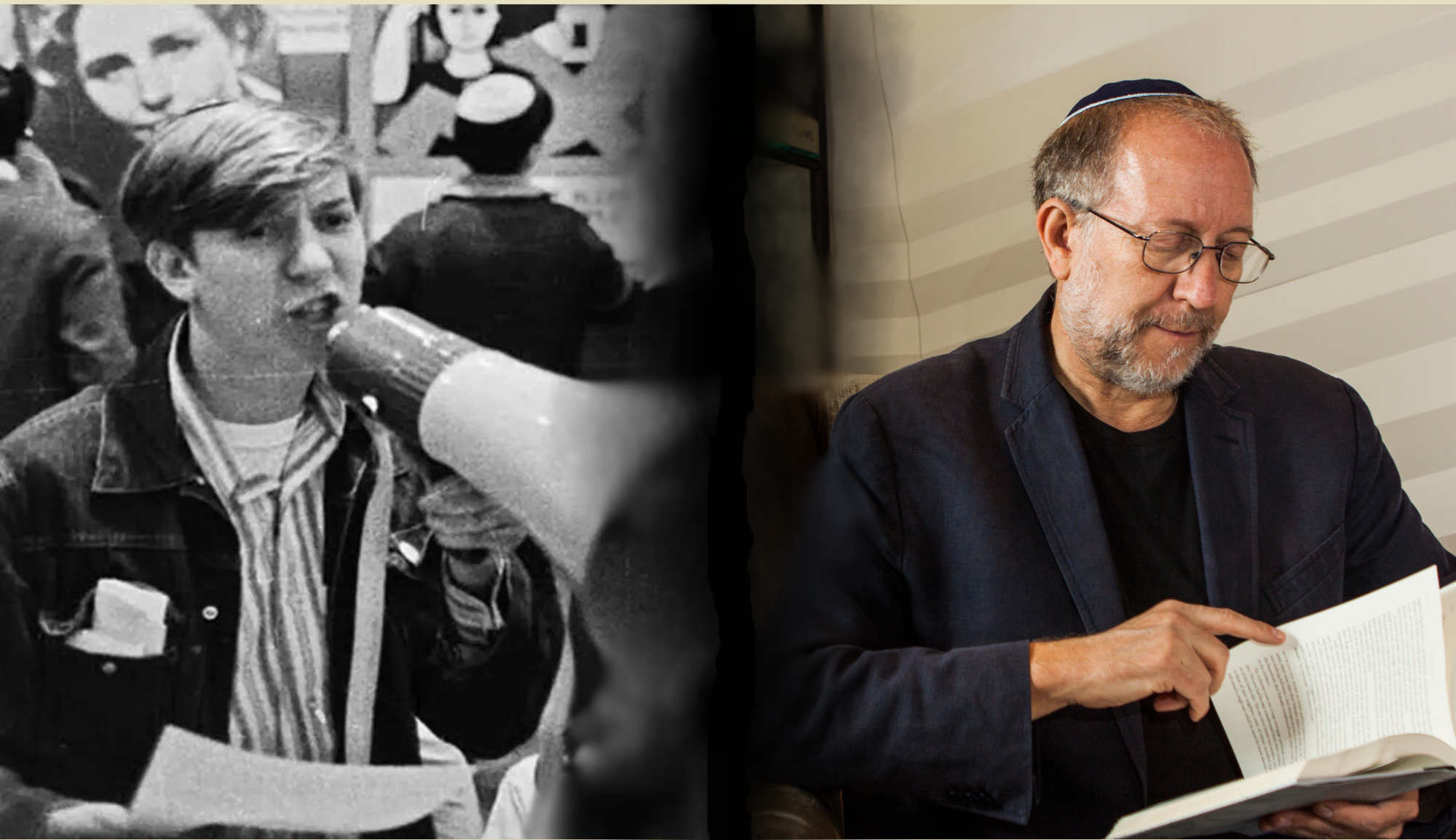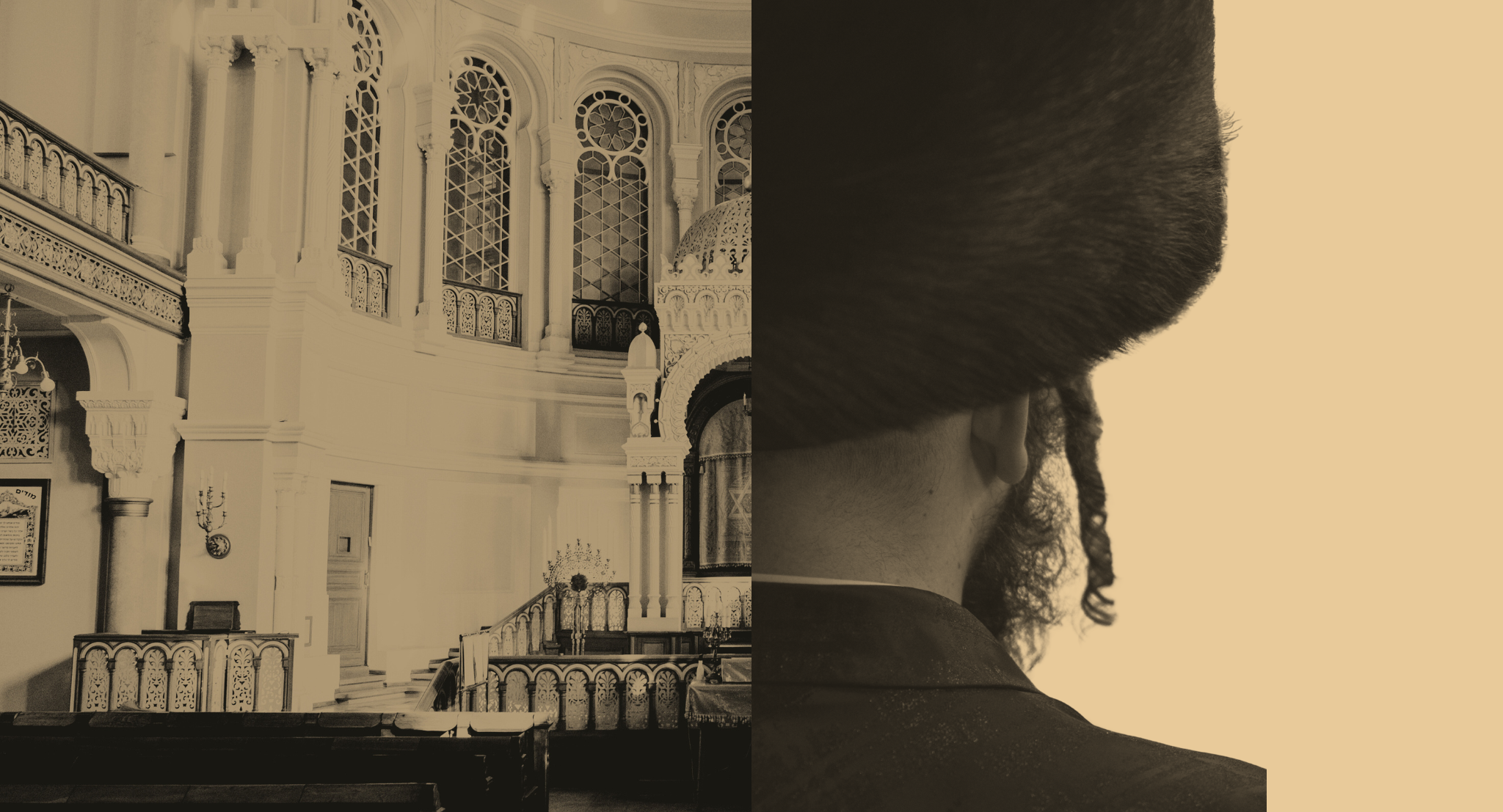
Summary
In this episode, David discusses the formation and character of the Talmud with special guest Ari Bergmann, founder and Chief Investment Officer at Penso Advisors LLC, as well as Talmud professor at Yeshiva University.
In 1688, a Spanish Jewish merchant living in Amsterdam named Joseph Penso de la Vega wrote Confusion of Confusions, a masterpiece that still shapes our understanding of the stock market today. In addition to being a thorough and interesting debate on financial markets, three quarters of the book is dedicated to the Talmud. De La Vega was the first to merge those topics.
Ari Bergmann continues that tradition, spending equal time devoted to the world of finance and academic Talmud. Bergmann’s approach to the study of Talmud is shaped by the idea of consilience – ideas don’t come through specific channels. They percolate throughout the world and inform various disciplines. Tune in to join David and Ari discuss the nature of the non-linear Talmud, how it developed, and how disparate ideas inform our understanding.
Transcript
David Bashevkin:
Welcome to the 18Forty podcast where we discuss issues, personalities, and ideas about religion and traditional world confrontation with modernity, and how on earth are we supposed to construct meaning in the contemporary world right now. We are so excited to have a special guest on the 18Forty podcast. It is a mentor of mine, a teacher, somebody who I’ve known a very long time, Dr. Rabbi Ari Bergmann. He is the founder of Penso Advisors, which is a financial services company, as well as a teacher of Talmud. He got his PhD from Columbia University. Ari, it is such a joy to have you here.
Ari Bergmann:
It’s such a pleasure to be here, and I’m very happy to be part of this.
David Bashevkin:
Thank you so, so much. So much of my perspective and view on the Talmud and on Jewish thought in general comes from you. I’ve known you a very long time, I’ve been paying close attention to a lot of your ideas. I wanted to hear more because very little is known about your past. How did you first fall in love with Talmud study?
Ari Bergmann:
I’m Brazilian. I wasn’t from a religious background, I became religious at the age of 15. So that was back in the late 70’s, early 80’s. I went to Baltimore, to Ner Israel, and I love studying, I love learning Talmud. It was love at first sight. That wasn’t the traditional sense.
David Bashevkin:
So you were a boy, no serious religious educational background, showing up in Baltimore.
Ari Bergmann:
Yeah, not at all. But I remember the first tractate that I learn was Berakhot, and actually there was a big test in Baltimore, the 10th grade, and I worked hard for it, and I felt that I mastered it. So it just developed from there on.
David Bashevkin:
And your initial foray into Talmud study was not academic?
Ari Bergmann:
No, not at all. I studied in the regular traditional Yeshiva, I went first to Baltimore, from Baltimore went to Ponevezh for a zman. Then I went to Yeshivat Chevron in Israel. I got married, and I went to Kollel, I was in Kollel in Israel. Then I moved back to America to work, and then at some point in time I decided to go to Columbia. I originally went for Jewish History under Yosef Hayim Yerushalmi, and it happened so that Yerushalmi was on a sabbatical. I needed to find a course to take, and I realized that Professor David Weiss Halivni was giving a course on Talmud at Columbia. I thought it was very odd. Columbia, Talmud, what does it have to do with each other? And I decided to have a friend and to just go there, and it was love at first sight.
David Bashevkin:
What I’m so fascinated by is how the trajectory of your life in many ways has a Talmudic discourse to it, and the different stages of your life played off of each other. It’s not very sequential, like somebody who’d go to university, and then become a professor and spend their life doing that. You have a lot of disciplines merging with one another. Before we get into the topic of your dissertation, which was really a close study of the formation of the Talmud itself, I want to start at the beginning of the topics that interested you before you got into Talmud study. And that is, where I knew you from was basic classes – they weren’t basic, but classes in classical Jewish thought – and particularly in the thought of Rav Tzadok Hakohen MiLublin, who I knew you quoted a lot. He was a Hasidic thinker who was born in 1823, died in 1900. And what’s always fascinated me is that I studied him in the academic level as well under Dr. Yaakov Elman, who also got a PhD in Talmud. And I was always fascinated by this commonality, that this Hasidic thinker, and Hasidic Jewish thought that you would never think would lend itself into academic thinking, eventually can bear upon academic thought. Or two people, two people in my life – you guys knew each other but it was totally separate – were drawn to academic Talmud study, having a foundation in the thought of a Hasidic thinker. Why do you think that you both made that leap? I mean obviously you can’t talk about him, he passed away, but for you, how do you explain that sequence?
Ari Bergmann:
I think it was very natural. I think, number one, Rav Tzadok was a typical example of a dialectical kind of a life. He was a total Litvish person, he was a Lithuanian Jew in regular yeshivas. And because of circumstances in his life he became Hasidic, and he transitioned, he had a period which was a transitional period. So this dialectics, that back and forth, the incongruences, the jump processes, you see that in Rav Tzadok. That’s number one. I think Rav Zadok also is a very creative radical thinker, out of the box. And I think number three, Rav Zadok encourages the concept of consilience, which means to merge different ideas, different thoughts, and even non-Jewish thinking, within Torah. Meaning his view is that there is such thing as zeitgeist. That ideas percolate throughout the world, and many times they don’t come through the regular traditional channels.
David Bashevkin:
So before we get into your specific views of the Talmud, I wanted to make one more pit stop, and that is: you spent most of your career, and you still are, in the world of finance. And I’ve always found it fascinating that somebody who would spend the time to get a PhD in Talmud would be drawn to the world of finance. I know your early career was in derivative trading. Do you find that there is an overlap between your connection to the world of finance, and your work in finance, and your thoughts and ideas that you’ve shared in the world of academic Talmud?
Ari Bergmann:
Absolutely. First of all, our business, which is focused on derivatives, is called Penso. And it’s basically named after Joseph Penso de la Vega. The first book ever on the financial markets focused on derivatives in the modern financial markets, which is the trading of the company of the West Indies in Amsterdam, is a book written in 1688, in Spanish, and is one of the 10 best books ever written on the modern financial markets. And it preceded the next book, which was Robert McCain in 1850, so basically 120 years, and was written by a Talmudist, somebody who actually wrote about the Talmud. His name was Joseph Penso de la Vega, was a Jewish ex-Murano. The family moved to Amsterdam from Portugal, and his book, Confusion de Confusiones, which is a very thorough and interesting debate about the financial market, actually has three quarters of the book dedicated to Talmud. So he was the first one who merged the Talmud and modern financial markets.
David Bashevkin:
Wow. So I guess those two areas, your financial background and also your background in studying Hasidic thought and Jewish theology, are the prototypical mishnayos in this discussion. And now I want to break down and elucidate that with your approach to the Talmud. And I would begin with the following broad question: What is your view? What is the Talmud? What kind of collection of ideas is this? Because it’s very strange. The book does not contain an introduction, there’s no introduction explaining what it is. It was first transmitted orally, but now that it’s written, it almost assumes that you know the beginning of the middle and the end right on the first page. How do you approach – what is the Talmud trying to accomplish? Is it a commentary on the Torah, on the Bible? Is it a collection of laws? Is it a book of fantastic stories? Is it all of the above? It seems like it’s written so non-sequentially, and it seems very strange that it is presented in such a way. So I wanted to first hear, what is your view, what is the Talmud?
Ari Bergmann:
The Talmud is interesting. The Talmud is number one, what makes the Talmud unique? It’s a collective work that developed through hundreds of years. The Jewish people, which described in the Quran as the [inaudible] the people of the book, did not write any book or work for hundreds of years. And it all developed into this organic discussion called the Talmud. So the Talmud is a collective work for hundreds of years. It’s a book that does not have a beginning, and does not have an end, and is not sequential. It’s a live debate, an understanding, and a process of thinking. It’s not a book of laws, it’s not a book of customs, it’s not narratives, it’s not stories. It’s a conversation. It’s a conversation of various generations, all brought in a very contemporary, as if they were talking to each other, because they never faced each other, to create a process of thinking. I think it’s a process of understanding. It’s a bridge between a written law to an oral tradition, from a static oral tradition, to an organic evolving process of applying the law, and applying Judaism in the real sense.
David Bashevkin:
So this gets into a question that bothers a lot of people when they read a passage of Talmud, and even the whole concept in the corpus of rabbinic law. When the rabbis of the Talmud, when the Amoraim, as they’re known, approach the text of the Torah. They extrapolated all of these laws that they took out of the text. And you read the simple meaning of the text, and it seems like it’s from outer space, they’re pulling laws down from thin air. How should one approach what they are doing there? Obviously there’s what’s known as the pshat, the simple meaning, of any of these pesukim, and then they’re doing something called, they’re darshening, they’re extrapolating laws out of this. Where are those laws coming from? Were they convinced that this was the intent of the pesukim, that this is the laws that the pesukim were trying to convey, or were they inventing new ideas just out of thin air?
Ari Bergmann:
Interestingly, this is a discussion and a great controversy among various of the Rishonim, of the early medieval commentators. Taking the Maimonidean, from Maimonides, how Maimonides approaches, and I think it’s a very clear way to start. If Maimonides says, listen, there is the simple meaning of the law, which is the Bible in its simple idea. But the Bible gave the authority, and actually gave the agency to the Jewish people, to develop the law, to create something called applied meaning, to give a reader’s understanding in term be used tasks. I think the bible was written ambiguously with a lot of extra words, to give room to maneuver. For a book to be eternal, it needs to have a base that allows you to develop. So Maimonides says, okay, the law is divided basically in various aspects. You have the simple translation of the Bible and on that there is something called the tafsir, there is something called the actual tradition of how to read the Bible. Because the Bible in itself, how to translate the words, what the words mean, in itself became a reason for debate. So Maimonides says there was a tradition of how to read the Bible. When the Bible says “pri etz hadar,” what does that mean? So that means an etrog. So those are traditions given. But then the Torah gave the authority to the community to take the Bible and to apply meaning to it. Gave set rules and certain latitude to allow to create applied meaning. So applied meaning is not invented law, it’s an extension of the law. It’s basically applying rules, hermeneutical rules, to develop law, to apply law, to make law life, and to create, to allow the Bible to be concurrent. You take a book that was given thousands of years ago, how to grow in a way to evolve with the community.
So basically the Bible gave you the basics, and they gave you applied law to evolve, going forward. Now Maimonides doesn’t believe that that’s the original intent. The original intent was to give the rabbis latitude, applied law. Very similar to Plato’s idea of The Republic, that there is an application of law. All the commentators will say that the Bible had multiple meanings, multiple possible meanings, and the rabbis just decided to select and apply one of those meanings. So either this is an ambiguity, those are the holes and the gaps that the rabbis came to fill the gaps, to allow the Bible to evolve, or there are multiple meanings and they just chose one of them. I think that every religion, if you want to make a book eternal, it cannot be stuck in time. If it’s stuck in time, it becomes irrelevant once it’s published. The beauty of the Bible is exactly that: that it gave you a base, but gave you enough… It gave you enough ambiguity to allow the law to evolve, and it gave you a process how to do that.
David Bashevkin:
So when we look at the Talmud now, so I know the focus of your dissertation really focuses on the formation of the Talmud. But before we get into that specific detail, a lot of people who come from more traditional backgrounds are hesitant to even study academic Talmud. They’re worried that it may devalue the greatness or the reverence that they may have for the text. Was that your experience in Columbia, when you obviously studied academic Talmud? Were you able to create a coherence between the approach that you learned in Yeshiva and the one that you developed in Colombia towards learning Talmud study?
Ari Bergmann:
Absolutely. Not only I didn’t think, and I don’t see that there is any contradiction, but I think the academic Talmud is extremely important to allow the Yeshiva traditional learning to evolve, and to provide many answers and many ideas, and a background, how to use the interpretation. I think that there was a hesitation, in the beginning, because they thought that this will come to clash the tradition and devalue the text. As we’ve seen in Rav Kook, in the famous letter to Rabbi Yitzchak Isaac Halevy, the Dorot HaRishonim, say that that’s not true. Just the opposite, quite the opposite. If you have the right ideas, and the right religious background and underpinnings, and for sure the thought of Rav Tzadok, you don’t see any contradictions, you just see a way how to evolve Talmudic study to the next level. It’s extremely important.
David Bashevkin:
So in your dissertation, and you just mentioned Rav Yitzchak Isaac Halevy, the Doros HaRishonim, and that is really the study, the focal point of your dissertation. I was wondering if you could tell us a little bit, not just about him, but the question that you were trying to answer in your dissertation.
Ari Bergmann:
The focal point is that we have today something called the Orthodox Talmud, the Talmud how the Orthodox yeshivot view it. And it’s an image, some kind of a constructed Talmud that has many underlying assumptions that people don’t question.
David Bashevkin:
I learned in Yeshiva, that two people wrote the Talmud: Ravina and Rav Ashi.
Ari Bergmann:
And Rav Ashi. And not only that, there’s so many underlying assumptions that people subconsciously have their assumptions, and basically all the questions and the answers given are all based on that. Basically people drink their own Kool-Aid. So it’s basically, I always say it’s a great Kool-Aid, but it’s almost circular logic. And I think that the time came and I wanted to challenge those ideas. Because those ideas became verbalized, and became systematized in the Dorot HaRishonim. I think before the Dorot HaRishonim, nobody really spent the time to say, “Okay, what are the underlying assumptions? What’s the historical process that we imagine? When you look at the Talmud, you have, subconsciously, a historical construct. What is that historical construct?” So Rabbi Yitzhak Isaac Halevy came to number one, develop some kind of a chronology –
David Bashevkin:
He’s fairly recent, he’s fairly modern.
Ari Bergmann:
He was in 19th century, this was printed at the end of the 19th century, beginning of the 20th century. And I developed the idea, why did he come up at the time. There was reason how and why it came to be a subject at the time. It wasn’t a subject for thousands of years, why does it become a subject then? But he creates a construct, and then he tries to prove, or to make the text fit that construct because it’s a round peg in a square hole. And he tries to retrofit, and he’s very creative, very smart, he was a great Talmudist, but I just showed in the dissertation that that construct is almost unattainable. It’s at best fiction.
David Bashevkin:
So when someone were to ask you, who wrote the Talmud and when was it written, what is your answer?
Ari Bergmann:
I think first of all, writing is the wrong aspect, because the writing and the composition are not the same. There are so many earlier questions. How did the Talmud come about? What was the form criticism? Meaning, how was it performed? What is the structure of the Talmud? When was it sealed, finalized? Why was it? Is the Talmud just one text, or is the Talmud a combination of various layers of text? Because it depends on how it was performed orally. Why and when did it become written? How was the process of writing? All of this are very important questions. The Talmud is an organic work. Meaning, I think that people think that the Talmud is like an encyclopedia: there was a text that was edited, put together, and was framed with a beginning, end, and an author. And clearly the Talmud is not like that. Anybody who learned the Talmud – if the Talmud had been like this, I think that all of the literature written on the Talmud would be completely inexistent. The beauty of the Talmud is that it’s an organic growth. It’s much more of a Wikipedia than encyclopedia. It’s a Wikipedia that was rewritten, organically grown, over hundreds of years, and that ambiguity that the Bible presented to the rabbis, the rabbis made sure to create a Talmud to present the same thing. So all of these ideas when, how, is a much more complex story. And I think that all of the presumptions that we have, that two people wrote it, put it together, edited it, put it as a book, are just not real.
David Bashevkin:
What were the values of the formation of the Talmud given such a maze and so much ambiguity? What were they trying to convey by preserving that structure? I mean, Marshall McLuhan famously said, “The medium is the message.” So if the medium is this chaos, is this non-sequential disorderly book, what were they trying to convey by keeping it that way? Surely they could have had an editor, they could have structured it differently. Why is it that in the intellectual Jewish history, it takes until the Rambam, until we have a sequentially, formally written system, orderly, like an encyclopedia? Why did they preserve that structure?
Ari Bergmann:
Because the rabbis believed, and I think that even Maimonides, that the more structured it is, you are basically putting it into some kind of a… You’re limiting the text. If you want the text to be real, to evolve, the community to live, you need it to bring a process of thinking. It’s important to give a process of understanding, of how to develop law, how to apply law. You cannot put the Talmud in a straight jacket. My motto is, if you put the Talmud in a straight jacket, and you create some kind of a rigid halakha system, a very clear number one, you make it obsolete the day you publish it. The Jews went through various situations. The communities were spread all over. We didn’t have a national home, so that would never work. What’s right in one circumstance is not right in a different circumstance. The Talmud fosters debate, argument, it’s diversity. The second you structure it, it’s not diverse anymore. So that process, the rabbis are very much against it. I think when Maimonides came up with his very structured book, it became very controversial. It was an extremely controversial idea that in the end didn’t take hold. Because they did to the Rambam the same thing they did to the Talmud, and to the Bible. They created various layers of interpretation, very far from the original intent, because even that was ambiguous enough.
David Bashevkin:
What’s very interesting to me, and we’ve touched upon before in passing conversation, is the connection between Talmudic thought and current political thought, in the sense that Rav Yitzchak Isaac Halevy was very involved in Jewish communal politics. He’s the one who really founded, and was the driving force of founding, Agudah. Do you think that his program and approach to Talmud affected the way, and his philosophy of the political Jewish community?
Ari Bergmann:
I’m publishing a book on the topic, and I think it’s very hard to know which way went through. Either his political view shaped the way how we understood the Talmud, or the Talmud, his way of understanding the Talmud, shaped his political view. And in my view is probably the opposite. Probably he had the view, a political view, what he thought was right, to the 19th century, and by nature, that’s how he saw the Talmud. The beauty of the Talmud, the ambiguity is that you could create an image of the book to feed your own views. Not only you could actually, the Talmud is amorphous enough to allow you several layers of interpretation, there are levels of interpretation of the nature of the book, the nature and the program of the debate, and also the nature of Jewish law.
David Bashevkin:
So let me end with a few shorter questions, I know that you are pressed for time. If somebody is looking to fall in love with Talmud study, where would you suggest they begin?
Ari Bergmann:
Studying the Talmud. You just start like I did. I actually did from Berakhot, just going straight. And just…
David Bashevkin:
Really?
Ari Bergmann:
Yes, that’s how I did. I remember when I joined Yeshiva, I never knew –
David Bashevkin:
And there were no translations then.
Ari Bergmann:
At that time I had one translation, Adin Steinsaltz, original Hebrew work. And he was my rebbe, that’s the one that I got it. I just I did Berakhot, and I went as far as he translated, and I had to wait for his translations to come online. But it’s amazing… It’s fascinating. The Talmud creates a method of thinking, a very creative method of thinking. I always say, how you evolve evolution without being revolution. It’s change in the language of continuity. That’s how you appreciate the Talmud, but you can only appreciate by learning it.
David Bashevkin:
I’ll ask a few shorter questions, I hope you’ll humor me with your responses. What is your, and I’ve actually been curious about this for a long time, what is your daily schedule? When do you usually work until and when do you usually wake up?
Ari Bergmann:
I don’t think there’s anything usual. If you’re in the financial markets, you know that Trump’s tweet can change your day completely. So it’s very hard to plan a day, but usually I try to write, probably the best time to write that you have a very clear head is early in the morning, let’s say like four or five o’clock in the morning, before I go to shacharit –
David Bashevkin:
You’re an early riser?
Ari Bergmann:
Yes. Not always yes, but I try to. And then I go to work. I come back from work at night, at around 7:00, 8:00, and then I learn. I have my regular studying that I have, that I have my regular times, and I actually prepare my shiurim, and when I’m involved in research, that’s when I do a lot of the research.
David Bashevkin:
Now you are coming out with a book on Rav Yitzchak Isaac Halevy, and you’re coming out with books on classes that you’ve given. If you were to write a book on a non-Jewish subject, what do you think the book would be about?
Ari Bergmann:
On a non-Jewish subject? I probably would write a Jewish perspective in a non-Jewish subject. Because I think that that’s what we add. I think the beauty of what we add is our Jewish perspective, and I think we have a lot to add on the financial markets.
David Bashevkin:
On which subject?
Ari Bergmann:
On the financial markets, that’s something that’s natural to me. I have written on that and analyzed that.
David Bashevkin:
Final question: is there a book that you would recommend to somebody who wants to learn more about the world of academic Jewish studies, academic Talmud, for a beginner, that you think would be a great entry point into this universe? Obviously other than your own, which is not yet out.
Ari Bergmann:
Yes, there is… It’s not easy to find – Listen, the Cambridge Companions that you have to the Talmud are interesting. I think even the Jewish – One excellent introduction to all of this is the Jewish Encyclopedia entry on the Talmud.
David Bashevkin:
In Encyclopedia Judaica?
Ari Bergmann:
Encyclopedia Judaica, the entry is an extremely good entry.
David Bashevkin:
Okay. Ari, it means a great deal that you stopped by.
Ari Bergmann:
It was a great pleasure.
David Bashevkin:
Thank you so, so much and have a great night.
Ari Bergmann:
Thank you.
Recommended Podcasts
podcast
Hadas Hershkovitz: On Loss: A Husband, Father, Soldier
In this episode of the 18Forty Podcast, we speak with Hadas Hershkovitz, whose husband, Yossi, was killed while serving on reserve duty in Gaza in 2023—about the Jewish People’s loss of this beloved spouse, father, high-school principal, and soldier.
podcast
Haviv Rettig Gur: ‘Hamas is upset the death toll in Gaza isn’t higher’
Haviv answers 18 questions on Israel.
podcast
Elissa Felder & Sonia Hoffman: How the Jewish Burial Society Cares for the Dead
Elissa Felder and Sonia Hoffman serve on a chevra kadisha and teach us about confronting death.
podcast
How Different Jewish Communities Date
On this episode of 18Forty, we explore the world of Jewish dating.
podcast
Red Flags: A Conversation with Shalom Task Force Featuring Esther Williams and Shana Frydman
We have a deeply moving conversation on the topic of red flags in relationships.
podcast
Einat Wilf: ‘Jews Are Never Allowed To Win, and Arabs Are Never Allowed to Lose’
The true enemy in Israel’s current war, Einat Wilf says, is what she calls “Palestinianism.”
podcast
The Dardik Family: A Child Moves Away From Zionism
In this episode of the 18Forty Podcast, we talk to Judah, Naomi, and Aharon Akiva Dardik—an olim family whose son went to military jail for refusing to follow to IDF orders and has since become a ceasefire activist at Columbia University—about sticking together as a family despite their fundamental differences.
podcast
Aliza and Ephraim Bulow: When A Spouse Loses Faith
In this episode of the 18Forty Podcast, we talk to Aliza and Ephraim Bulow, a married couple whose religious paths diverged over the course of their shared life.
podcast
Shlomo Brody & Beth Popp: Demystifying Death and the End of Life
In this episode of the 18Forty Podcast, we talk to Rabbi Shlomo Brody and Dr. Beth Popp.
podcast
‘Everything About Her Was Worth It’: The Life of Yakira Leeba Schwartz A”H
In this episode of the 18Forty Podcast, we talk to Yisroel Besser, who authored many rabbinic biographies and brought David Bashevkin to Mishpacha magazine, about sharing Jewish stories.
podcast
Menachem Penner & Gedalia Robinson: A Child’s Orientation
In this episode of the 18Forty Podcast, we talk to Rabbi Menachem Penner—dean of RIETS at Yeshiva University—and his son Gedalia—a musician, cantor-in-training, and member of the LGBTQ community—about their experience in reconciling their family’s religious tradition with Gedalia’s sexual orientation.
podcast
Benny Morris: ‘We should have taken Rafah at the start’
Leading Israeli historian Benny Morris answers 18 questions on Israel, including Gaza, Palestinian-Israeli peace prospects, morality, and so much more.
podcast
Rabbi Meir Triebitz: How Should We Approach the Science of the Torah?
In this episode of the 18Forty Podcast, we sit down with Rabbi Meir Triebitz – Rosh Yeshiva, PhD, and expert on matters of science and the Torah – to discuss what kind of science we can learn from the Torah.
podcast
Anshel Pfeffer: ‘The idea that you’ll obliterate Hamas is as realistic as wanting to obliterate Chabad’
Prime Minister Benjamin Netanyahu did not surprise Anshel Pfeffer over the last 17 months of war—and that’s the most disappointing part.
podcast
Why 1840?
In this episode of the 18Forty Podcast, we sit down for a special podcast with our host, David Bashevkin, to discuss the podcast’s namesake, the year 1840.
podcast
Larry and Tzipora Rothwachs: Here Without You — A Child’s Eating Disorder
In this episode of the 18Forty Podcast, we talk to Rabbi Larry Rothwachs and his daughter Tzipora about the relationship of a father and daughter through distance while battling an eating disorder.
podcast
Anita Shapira: ‘You cannot wipe out Hamas’
Leading Israel historian Anita Shapira answers 18 questions on Israel, including destroying Hamas, the crisis up North, and Israel’s future.
podcast
Talia Khan: A Jewish Israel Activist and Her Muslim Father
In this episode of the 18Forty Podcast, we talk to Talia Khan—a Jewish MIT graduate student and Israel activist—and her father, an Afghan Muslim immigrant, about their close father-daughter relationship despite their ideological disagreements.
podcast
Frieda Vizel: How the World Misunderstands Hasidic Jewry
In this episode of the 18Forty Podcast, we talk to Frieda Vizel—a formerly Satmar Jew who makes educational content about Hasidic life—about her work presenting Hasidic Williamsburg to the outside world, and vice-versa.
podcast
Gadi Taub: ‘We should annex the north third of the Gaza Strip’
Gadi answers 18 questions on Israel, including judicial reform, Gaza’s future, and the Palestinian Authority.
podcast
Lizzy Savetsky: Becoming a Jewish Influencer and Israel Advocate
In this episode of the 18Forty Podcast, we talk to Lizzy Savetsky, who went from a career in singing and fashion to being a Jewish activist and influencer, about her work advocating for Israel online.
podcast
Mikhael Manekin: ‘This is a land of two peoples, and I don’t view that as a problem’
Wishing Arabs would disappear from Israel, Mikhael Manekin says, is a dangerous fantasy.
podcast
Yishai Fleisher: ‘Israel is not meant to be equal for all — it’s a nation-state’
Israel should prioritize its Jewish citizens, Yishai Fleisher says, because that’s what a nation-state does.
Recommended Articles
Essays
This Week in Jewish History: The Nine Days and the Ninth of Av
Tisha B’Av, explains Maimonides, is a reminder that our collective fate rests on our choices.
Essays
I Like to Learn Talmud the Way I Learn Shakespeare
If Shakespeare’s words could move me, why didn’t Abaye’s?
Essays
3 Arguments for God’s Existence
Perhaps the most fundamental question any religious believer can ask is: “Does God exist?” It’s time we find good answers.
Essays
Fighting for My Father’s Life Was a Victory in its Own Way
After losing my father to Stage IV pancreatic cancer, I choose to hold onto the memories of his life.
Essays
Books 18Forty Recommends You Read About Loss
They cover maternal grief, surreal mourning, preserving faith, and more.
Essays
Benny Morris Has Thoughts on Israel, the War, and Our Future
We interviewed this leading Israeli historian on the critical questions on Israel today—and he had what to say.
Essays
Why Reading Is Not Enough for Judaism
In my journey to embrace my Judaism, I realized that we need the mimetic Jewish tradition, too.
Essays
A Letter to Children Estranged From Their Parents
Children cannot truly avoid the consequences of estrangement. Their parents’ shadow will always follow.
Essays
‘The Crisis of Experience’: What Singlehood Means in a Married Community
I spent months interviewing single, Jewish adults. The way we think about—and treat—singlehood in the Jewish community needs to change. Here’s how.
Essays
3 Questions To Ask Yourself Whenever You Hear a Dvar Torah
Not every Jewish educational institution that I was in supported such questions, and in fact, many did not invite questions such as…
Essays
(What) Do Jews Believe About the Afterlife?
Christianity’s focus on the afterlife historically discouraged Jews from discussing it—but Jews very much believe in it.
Essays
Do You Need a Rabbi, or a Therapist?
As someone who worked as both clinician and rabbi, I’ve learned to ask three central questions to find an answer.
Essays
Between Modern Orthodoxy and Religious Zionism: At Home as an Immigrant
My family made aliyah over a decade ago. Navigating our lives as American immigrants in Israel is a day-to-day balance.
Essays
Do We Know Why God Allows Evil and Suffering?
What are Jews to say when facing “atheism’s killer argument”?
Essays
The Erasure of Sephardic Jewry
Half of Jewish law and history stem from Sephardic Jewry. It’s time we properly teach that.
Essays
From Hawk to Dove: The Path(s) of Yossi Klein Halevi
With the hindsight of more than 20 years, Halevi’s path from hawk to dove is easily discernible. But was it at every…
Essays
Judith Herman Is Giving Voice to Survivors
Dr. Judith Herman has spent her career helping those who are going through trauma, and has provided far-reaching insight into the field.
Essays
‘Are Your Brothers To Go to War While You Stay Here?’: On Haredim Drafting to the IDF
A Hezbollah missile killed Rabbi Dr. Tamir Granot’s son, Amitai Tzvi, on Oct. 15. Here, he pleas for Haredim to enlist into…
Essays
The Hardal Community Explained: Torah, Am Yisrael, and Redemption
Religious Zionism is a spectrum—and I would place my Hardal community on the right of that spectrum.
Essays
A Brief History of Jewish Mysticism
To talk about the history of Jewish mysticism is in many ways to talk about the history of the mystical community.
Essays
Rabbi Eliezer Berkovits’ Complicated Portrait of Faith
Meet a traditional rabbi in an untraditional time, willing to deal with faith in all its beauty—and hardships.
Essays
How and Why I Became a Hasidic Feminist
The Lubavitcher Rebbe’s brand of feminism resolved the paradoxes of Western feminism that confounded me since I was young.
Essays
When Losing Faith Means Losing Yourself
Elisha ben Abuyah thought he lost himself forever. Was that true?
Recommended Videos
videos
Mysticism
In a disenchanted world, we can turn to mysticism to find enchantment, to remember that there is something more under the surface…
videos
18Forty: Exploring Big Questions (An Introduction)
18Forty is a new media company that helps users find meaning in their lives through the exploration of Jewish thought and ideas.…
videos
Talmud
There is circularity that underlies nearly all of rabbinic law. Open up the first page of Talmud and it already assumes that…
videos
The Hasidic Rebbe Who Left it All — And Then Returned
Why did this Hasidic Rebbe move from Poland to Israel, only to change his name, leave religion, and disappear to Los Angeles?
videos
Did Judaism Evolve? | Origins of Judaism
Has Judaism changed through history? While many of us know that Judaism has changed over time, our conversations around these changes are…
videos
Jonathan Rosenblum Answers 18 Questions on the Haredi Draft, Netanyahu, and a Religious State
Talking about the “Haredi community” is a misnomer, Jonathan Rosenblum says, and simplifies its diversity of thought and perspectives. A Yale-trained lawyer…
